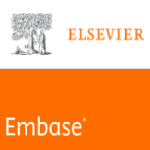Phase II Pilot Clinical Study of the Use of Uncaria tomentosa (Cat's Claw) Combined with Paullinia cupana (Guarana) for the Treatment of Symptoms in Terminal Cancer Patienna (Guarana) for the Treatment of Symptoms in Terminal Cancer Patients
DOI:
https://doi.org/10.18311/jnr/2018/21665Keywords:
Cancer, Clinical Trial, Palliative Care, Paullinia cupana, Uncaria tomentosa.Abstract
Previous studies in patients with advanced cancer have reported that Cat's claw dry extract (Uncaria tomentosa) and Guarana (Paullinia cupana) showed beneficial effects in patients with terminal cancer. Our objective is to investigate the combined action of these extracts in the control of symptoms in these patients. This prospective, uncontrolled pilot study evaluated the use of 100 mg of U. tomentosa dry extract three times daily combined with 50 mg of P. cupana dry extract twice daily in terminal patients with solid tumors who were ineligible for traditional therapeutic approaches. Patients had blood collected and answered questionnaires (EORTC QLQ-C30, FACIT-F, Chalder Fatigue Scale, HADS and PSQI-BR) before and after 3 and 6 weeks of treatment. Twenty-two volunteers were recruited; the mean age of the population was 68.3 years (range, 49-89 years), 86.3% were men, and half had a Karnofsky Index less than or equal to 60%. We observed improvement in fatigue, measured by the Chalder Scale (p = 0.0041), and nausea, measured by the EORTC QLQ-C30 scale (p = 0.0470), without significant weight loss (p = 0.3883) or influence on quality of life as measured by the FACIT-F questionnaire (p = 0.3375). Medications were well tolerated by most participants. No significant reduction in inflammatory parameters was observed during the treatment. The combination of U. tomentosa and P. cupana extracts is safe and has potential benefits for the control of fatigue and nausea in terminal cancer patients.Downloads
Metrics
Downloads
Published
How to Cite
Issue
Section
Accepted 2018-08-30
Published 2018-09-10
References
Weckerle CS, Stutz MA, Baumann TW. Purine alkaloids in Paullinia. Phytochemistry. 2003; 64(3):735–42.
Tfouni SAV, Camargo MCR, Vitorino SHP, Menegário TF, Toledo MCF. Contribuiçí£o do Guaraná em pó (Paullinia cupana) como fonte de cafeína na dieta. Revista de Nutriçí£o. 2007; 20(1):63–8.
Mattei R, Dias RF, Espinola EB, Carlini EA, Barros SB. Guarana (Paullinia cupana): toxic behavioral effects in laboratory animals and antioxidants activity in vitro. J Ethnopharmacol. 1998; 60(2):111–6.
Espinola EB, Dias RF, Mattei R, Carlini EA. Pharmacological activity of Guarana (Paullinia cupana Mart.) in laboratory animals. J Ethnopharmacol. 1997; 55(3):223–9.
Marcon R, Del Giglio A, Pianowski LF, Calixto JB. An analysis of the role of Paulinia cupana (Guaraná) in blood IL-1b and brain IL-6 levels as well as brain IL-6 and TNF-a mRNA expression in mice. J Clin Oncol. 2011; 29(15_ Suppl):e21002.
de Oliveira CMP, Riechelmann R, Martins LC, Hassan BJ, Casa FB, Del Giglio A. Guarana (Paullinia cupana) improves fatigue in breast cancer patients undergoing systemic chemotherapy. J Altern Complement Med. 2011; 17(6):505–12.
Palma CG, Lera AT, Lerner T, de Oliveira MM, de Borta TM, Barbosa RP, et al. Guarana (Paullinia cupana) improves Anorexia in patients with advanced cancer. J Diet Suppl. 2016; 13(2):221–31.
Zevallos-Pollito PA, Filho TM. Levantamento e caracterizaçí£o de duas espécies do gíªnero Uncaria schreb. (Rubiaceae) correntes no Estado do Acre, Brasil. Ecol Apl. 2010; 9(1):19–30.
Pereira RDC, Pinto J, Bertolucci SKV, Castro ED, Silva FG. Germinaçí£o, avaliaçí£o do ácido giberélico e posiçí£o do explante no alongamento in vitro de Uncaria guianensis (Aublet) Gmelin Rubiaceae (Unha-de-gato). Cien Agrotec. 2006; 30(4):637–42.
Aquino R, De Simone F, Pizza C, Conti C, Stein ML. Plant metabolites. Structure and in vitro antiviral activity of quinovic acid glycosides from Uncaria tomentosa and Guettarda platypoda. J Nat Prod. 1989; 52(4):679–85.
de Paula LC, Fonseca F, Perazzo F, Cruz FM, Cubero D, Trufelli DC, et al. Uncaria tomentosa (cat's claw) improves quality of life in patients with advanced solid tumors. J Altern Complement Med. 2015; 21(1):22–30.
Fayers P, Aaronson N, Bjordal K, Groenvold M, Curran D, Bottomley A. The EORTC QLQ-C30 scoring manual. Brussels: European Organization for Research and Treatment of Cancer; 2001.
Peipert JD, Beaumont JL, Bode R, Cella D, Garcia SF, Hahn EA. Development and validation of the functional assessment of chronic illness therapy treatment satisfaction (FACIT TS) measures. Qual Life Res. 2014; 23(3):815–24.
Zigmond AS, Snaith RP. The hospital anxiety and depression scale. Acta Psychiatr Scand. 1983; 67(6):361– 70.
Cho HJ, Costa E, Menezes PR, Chalder T, Bhugra D, Wessely S. Cross-cultural validation of the Chalder Fatigue Questionnaire in Brazilian primary care. J Psychosom Res. 2007; 62(3):301–4.
Buysse DJ, Reynolds CF, Monk TH, Berman SR, Kupfer DJ. The Pittsburgh Sleep Quality Index: a new instrument for psychiatric practice and research. Psychiatry Res. 1989; 28(2):193–213.
Campos MP, Hassan BJ, Riechelmann R, Del Giglio A. Cancer-related fatigue: a practical review. Ann Oncol. 2011; 22(6):1273–9.
Baró E, Carulla J, Cassinello J, Colomer R, Mata JG, Gascón P, et al. Psychometric properties of the perform questionnaire: a brief scale for assessing patient perceptions of fatigue in cancer. Support Care Cancer. 2011; 19(5):657– 66.

 Lais Beltrào Magalhàes
Lais Beltrào Magalhàes








 0.35
0.35 24
24 0.161
0.161